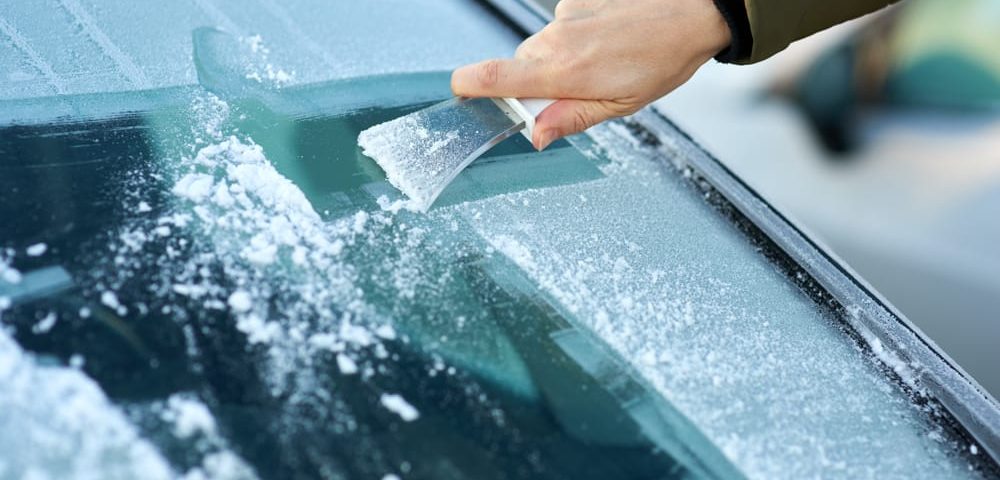
How Insurance Claims for Windscreen Repairs Work
October 20, 2024
Auto glass plays a crucial role in vehicle safety and performance. It’s designed to withstand various forces, ensuring visibility and protection for drivers and passengers. However, the longevity of auto glass can be significantly affected by weather conditions. Understanding how different elements—such as temperature fluctuations, UV exposure, precipitation, and wind—impact auto glass can help you take preventive measures to extend its lifespan.
1. Temperature Fluctuations and Auto Glass Stress
One of the most common weather-related factors affecting auto glass is temperature fluctuation. Sudden changes in temperature, particularly in regions with hot summers and cold winters, can cause significant stress on auto glass.
Thermal Shock
Thermal shock occurs when there’s a rapid shift from hot to cold or vice versa. For instance, imagine driving on a hot summer day and suddenly splashing cold water on the windshield, or turning on the air conditioning after the vehicle has been sitting under the sun. This rapid change in temperature can cause the glass to expand and contract, leading to cracks or chips over time.
During winter, the situation can be reversed. If you use hot water to defrost a frozen windshield, the temperature differential can cause the glass to crack. Auto glass is designed to handle moderate temperature changes, but extreme fluctuations accelerate wear and tear.
Cold Weather and Frost Damage
In colder climates, frost can also be a problem. If water seeps into tiny cracks or chips and then freezes, it expands, causing those cracks to widen. Over time, this can lead to larger fractures, compromising the structural integrity of the glass. Additionally, scraping frost or ice off the windshield using sharp tools can scratch the glass or worsen existing damage.
2. UV Exposure and Auto Glass Weakening
Exposure to the sun’s ultraviolet (UV) rays is another major weather-related factor that affects the longevity of auto glass. UV rays cause the protective layers of auto glass to deteriorate, particularly in laminated windshields that contain a plastic layer between two sheets of glass.
Fading and Discoloration
Prolonged exposure to sunlight can cause auto glass to discolor or develop a foggy appearance. This affects visibility, especially in direct sunlight or during nighttime driving. The UV rays can degrade the adhesive used around the edges of the windshield, potentially compromising its seal and making it more prone to leaks.
Weakened Adhesives
The same UV rays can also degrade the polyurethane adhesives used to bond the windshield to the vehicle’s frame. Over time, this weakening can reduce the effectiveness of the windshield in absorbing impact or maintaining structural integrity during accidents. Proper window tinting or parking in shaded areas can help mitigate these effects.
3. Precipitation and Moisture Intrusion
Rain, snow, and sleet are common weather conditions that can affect auto glass longevity, primarily by introducing moisture into areas where it doesn’t belong.
Water Seepage
When the seals around the edges of the windshield or side windows weaken due to UV exposure or wear and tear, water can seep into the cracks. This can cause further damage to the seals and even enter the vehicle, potentially leading to interior damage. Prolonged moisture exposure can cause mold growth, which might not directly affect the glass but will degrade the quality of the surrounding materials, potentially impacting the overall fit of the glass.
Snow and Ice Buildup
Snow and ice, particularly when allowed to accumulate for long periods, can also damage auto glass. The weight of snow or ice on the windshield can put pressure on it, especially if the glass already has minor cracks or chips. When attempting to clear snow or ice, improper use of tools or force can scratch or crack the glass.
In regions where roads are salted during the winter, the salt can mix with the snow and moisture, leading to corrosion around the edges of the windshield frame. Over time, this can weaken the frame, making it harder for the glass to remain securely in place.
4. Wind and Debris Impact on Auto Glass
Wind by itself isn’t inherently damaging to auto glass, but the debris that wind can carry certainly is. Strong winds can cause sand, dust, stones, and other debris to strike your windshield or windows at high speeds, leading to chips or cracks.
Flying Debris
High winds often pick up small pebbles, gravel, or even larger debris and throw them against your windshield. Even a small impact at high speeds can cause chips or cracks. Once there’s a weak spot in the glass, it’s more susceptible to further damage from temperature changes or additional impacts.
Windshield Wipers and Abrasion
Windshield wipers are an essential part of clearing the windshield in rainy or dusty conditions. However, wipers can also contribute to glass abrasion if dirt, sand, or other debris becomes trapped under the wiper blades. Over time, this can cause scratches on the windshield, reducing visibility and weakening the glass. This problem is exacerbated during storms when debris is more likely to be present on the windshield.
5. Hailstorms and Extreme Weather Events
Hailstorms are perhaps the most damaging weather events for auto glass. Hailstones, depending on their size, can cause significant damage to windshields, side windows, and rear windows.
Direct Impact Damage
Even a small hailstone can chip or crack auto glass, but larger hailstones, combined with strong winds, can shatter the glass entirely. While some damage might be repairable, severe impacts often necessitate a full windshield replacement. Drivers in areas prone to hail should consider using protective covers or parking in garages to minimize exposure during storms.
Preventive Measures Against Hail
If you live in an area susceptible to hailstorms, consider investing in a windshield that has additional protective layers, such as laminated glass. Some windshields are designed to be more resistant to hail damage, helping to prolong the life of your auto glass in extreme weather conditions.
6. Preventive Measures to Protect Auto Glass
While weather conditions will always have some impact on auto glass longevity, there are several steps you can take to minimize the damage:
- Park in shaded or sheltered areas: Parking in a garage or under a carport can protect your vehicle from UV rays, hail, and debris carried by the wind.
- Use proper defrosting techniques: Avoid rapid temperature changes by using gradual heating to defrost the windshield in winter.
- Check and maintain seals: Regularly inspect the seals around your windows and windshield to ensure there’s no water seepage or weakening adhesive.
- Repair chips and cracks immediately: Even minor damage can grow over time, especially when exposed to changing weather conditions. Address chips and cracks as soon as possible to prevent further damage.
- Clean windshield wipers and glass surfaces: Keeping your wipers and windshields clean ensures that dirt or debris won’t scratch the glass during regular use.
Conclusion
Weather conditions can significantly affect the longevity of your auto glass, from temperature fluctuations causing cracks to UV exposure weakening the glass and its adhesive. Moisture intrusion, wind-blown debris, and hailstorms further increase the risk of damage. By understanding how these factors affect your vehicle, you can take preventive measures to prolong the life of your auto glass, ultimately ensuring better visibility and safety while driving.
Suggestions for improvement:
- Provide real-world case studies or anecdotes of drivers experiencing weather-related auto glass damage.
- Include more visuals, like charts or diagrams, to illustrate the effects of different weather conditions.
- Expand on modern auto glass technologies and coatings that can enhance weather resistance.
Would you like me to add any of these elements or expand further on a specific section?










